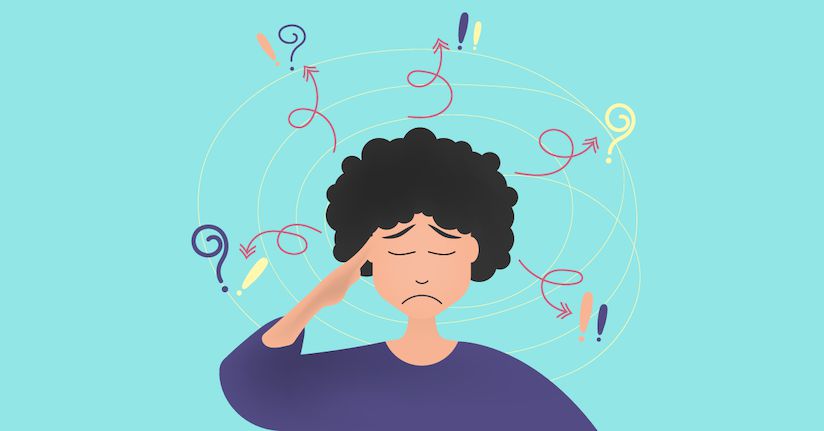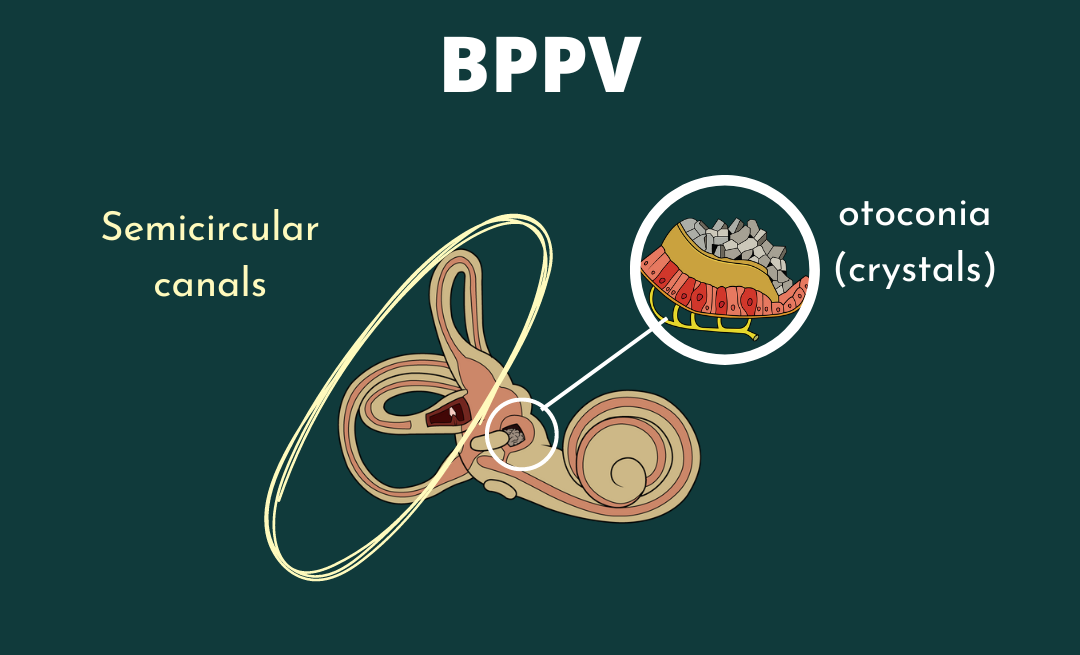Benign Paroxysmal Positional Vertigo, otherwise known as BPPV, is one of the most common causes of dizziness. It causes vertigo–the sudden sensation of spinning that usually lasts less than a minute. Though brief, it can range from mild to severe in intensity and be very disorienting. It occurs with a change in head position–rolling over while lying down, tilting your head, or sitting up after lying down.
Symptoms
As mentioned above, BPPV usually occurs with intense, room spinning vertigo that lasts lss than a minute. Other symptoms include:
- Nausea
- Vomiting
- Balance impairment
- Vertigo
- Nystigmus
BPPV can be reoccurring even after treatment. It can come and go as can symptoms and lead to other vestibular disorders like PPPD. It’s important to note that other vestibular disorders can also cause positional vertigo, but usually lasts more than a minute. BPPV and Vestibular Migraine and present very similar symptoms, and it is possible to have both.
Causes
BPPV is caused by crystals inside the inner ear to become dislodged. They are located inside the otolith organ which controls your sense of balance especially associated with head movements. When they dislodge, they move into your semi-circular canals so when you move your head, you become dizzy.
There are many reasons why BPPV can occur–a blow to the head, damage to the inner ear, or it can occur at random for no rhyme or reason.
Diagnosis
BPPV can be diagnosed by a physical therapist, an ENT, or sometimes on your own. It is important to note that BPPV always has nystagmus associated with it, if you do not have rapid eye movement you do not have BPPV. Other vestibular disorders may also present the same symptoms, so proper diagnosis is key.
There are tests you can perform on your own to see if you have BPPV. One of them is called a Hallpike-Dix maneuver in which you position your head at a certain angle and move rapidly to see if you have nystagmus and vertigo. We go over exactly how to perform this maneuver in Vestibular Group Fit.
If you’re unsure whether your symptoms are caused by BPPV or another vestibular disorder, be sure to work closely with your doctor because they are treated very differently. It is also possible to have BPPV along with other vestibular disorders.

Treatment
There are several maneuvers that a physical therapist or ENT can perform to get the crystals back in place. The main treatment is the Epley maneuver, which requires a certain head position and movement to move the crystals. This can be done at home as well, and we have a detailed module for that treatment in VGF.
In more severe cases, other more complicated maneuvers like the Brandt-Daroff Exercise are needed. This is when the crystals are lodged in a harder-to-reach place. Other maneuvers are also an option, but it is recommended to have a doctor or physical therapist perform this treatment. In the most severe cases, surgery may be needed, but this is extremely rare and uncommon.
Lingering imbalance and dizziness may occur even after treatment. Vestibular physical therapy is recommended to improve balance and reduce symptoms. Medications may also help with the uncomfortable sensations.
Prevention
Though lying flat may be uncomfortable for people who have experienced BPPV, there is no positional way to stop it from happening again. By fearing turning your head or not doing so, you may cause other problems in your neck that can lead to more dizziness symptoms.
Preventative measures that may help are exercise, supplements, medication, hydration, and eating healthy. If you have trouble lying flat due to BPPV, we have a whole module to get you comfortable lying down again.





